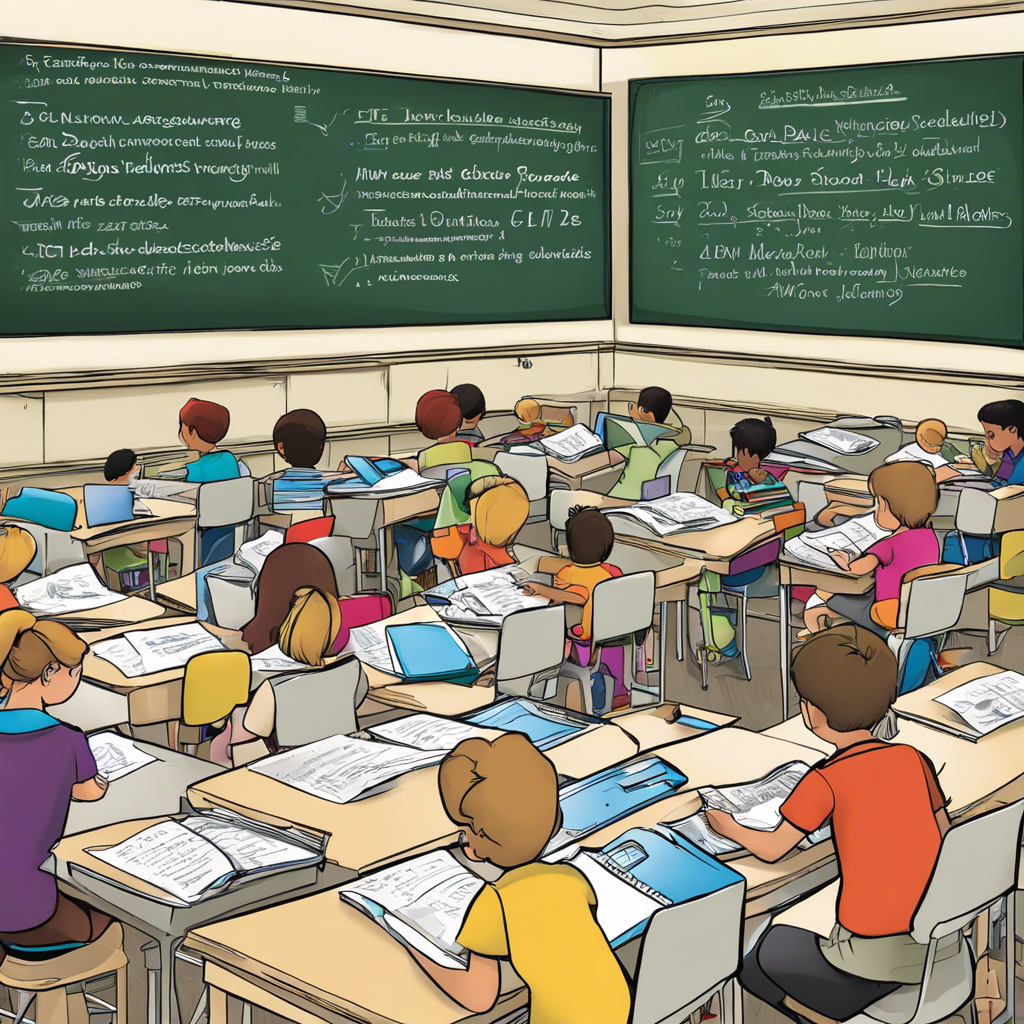**Revolutionizing Education: Unveiling Creative Teaching Strategies for Enhanced Learning**
The world of education is undergoing a transformative shift, with educators embracing innovative teaching methods to captivate and engage the modern learner. Gone are the days of traditional lectures; today’s classrooms are buzzing with interactive lessons and creative approaches that make learning an exciting adventure. This article explores some of the most effective and imaginative teaching techniques that are revolutionizing education and fostering a more dynamic and inclusive learning environment.
**Flipped Classrooms: Turning Learning on its Head**
Imagine a classroom where students come prepared with prior knowledge of the topic, making the learning process more interactive and collaborative. This is the essence of the flipped classroom model. Here, teachers provide students with video lectures or instructional materials beforehand, allowing them to learn the basics at their own pace. When students arrive in class, they engage in discussions, group activities, or problem-solving sessions, applying their newly acquired knowledge. This approach encourages active participation, critical thinking, and peer-to-peer learning, making education more engaging and effective.
For example, in a high school science class, students might watch a video lecture on cellular respiration at home, then come to class ready to perform experiments and analyze results as a group. This method not only enhances understanding but also fosters a sense of community and encourages collaborative problem-solving.
## Gamification: Learning Through Play
Gamification introduces elements of game design into the learning environment, turning education into an exciting adventure. This strategy includes earning points, achieving badges, and leveling up, which motivate students and make learning fun. For instance, a history teacher could create a quiz game where students compete to answer questions about historical events, earning points and progressing through levels as they master different eras. Gamification not only increases student engagement but also encourages healthy competition and a deeper understanding of the subject matter.
## Project-Based Learning: Real-World Application
Project-based learning (PBL) immerses students in real-world scenarios, allowing them to apply their knowledge and skills to solve complex problems. In PBL, students work on projects that mimic real-life challenges, fostering critical thinking, creativity, and collaboration. For example, in a math class, students might tackle a project involving city planning, where they use geometric concepts to design an efficient traffic flow system. By integrating learning with real-world applications, PBL makes education more meaningful and prepares students for future challenges.
## Experiential Learning: Learning by Doing
Experiential learning takes students beyond the classroom walls, offering hands-on experiences that deepen their understanding of the subject matter. This approach can include internships, field trips, and lab experiments, allowing students to apply their knowledge in practical situations. For instance, a biology class might visit a local nature reserve to study the ecosystem firsthand, collecting data and making observations that bring their textbook learning to life. Experiential learning not only enhances academic understanding but also nurtures soft skills such as communication, teamwork, and problem-solving.
## Technology Integration: Enhancing Learning with Digital Tools
Integrating technology into the classroom is a powerful way to cater to diverse learning styles and keep students engaged. Online learning platforms, interactive whiteboards, and educational apps offer a wealth of resources and interactive activities, making learning more accessible and interactive. For example, language learning apps can provide students with personalized lessons and immersive language experiences, while online simulations can help science students understand complex concepts through virtual experiments. Technology integration ensures that learning is tailored to individual needs and preferences, fostering a more inclusive and effective learning environment.
## Collaborative Learning: The Power of Teamwork
Collaborative learning emphasizes teamwork and peer-to-peer interaction, encouraging students to learn from and support one another. Group projects, peer tutoring, and think-pair-share activities are all examples of collaborative learning that foster a sense of community and mutual respect. For instance, in a literature class, students might engage in group discussions about a novel, sharing their interpretations and insights, and collectively analyzing the text. Collaborative learning not only enhances social skills but also promotes diverse perspectives and a deeper understanding of the subject.
**Conclusion: Unlocking the Potential of Innovative Teaching**
In today’s rapidly changing world, educators are embracing innovative teaching methods to captivate and inspire learners. From flipped classrooms and gamification to project-based learning and experiential adventures, these approaches are transforming education into a dynamic, engaging experience. By implementing these strategies, teachers can create an inclusive and stimulating learning environment that caters to diverse learning styles and prepares students for the challenges of the future.
As we continue to explore new frontiers in education, one thing is clear: the days of passive learning are behind us. With innovative teaching methods, educators are empowering students to become active participants in their learning journey, fostering critical thinking, creativity, and collaboration. Whether it’s through virtual reality simulations, gamified quizzes, or hands-on projects, learning is becoming more interactive, engaging, and fun. This transformation not only benefits students but also inspires educators to continually seek new ways to make learning an exciting, lifelong adventure.

